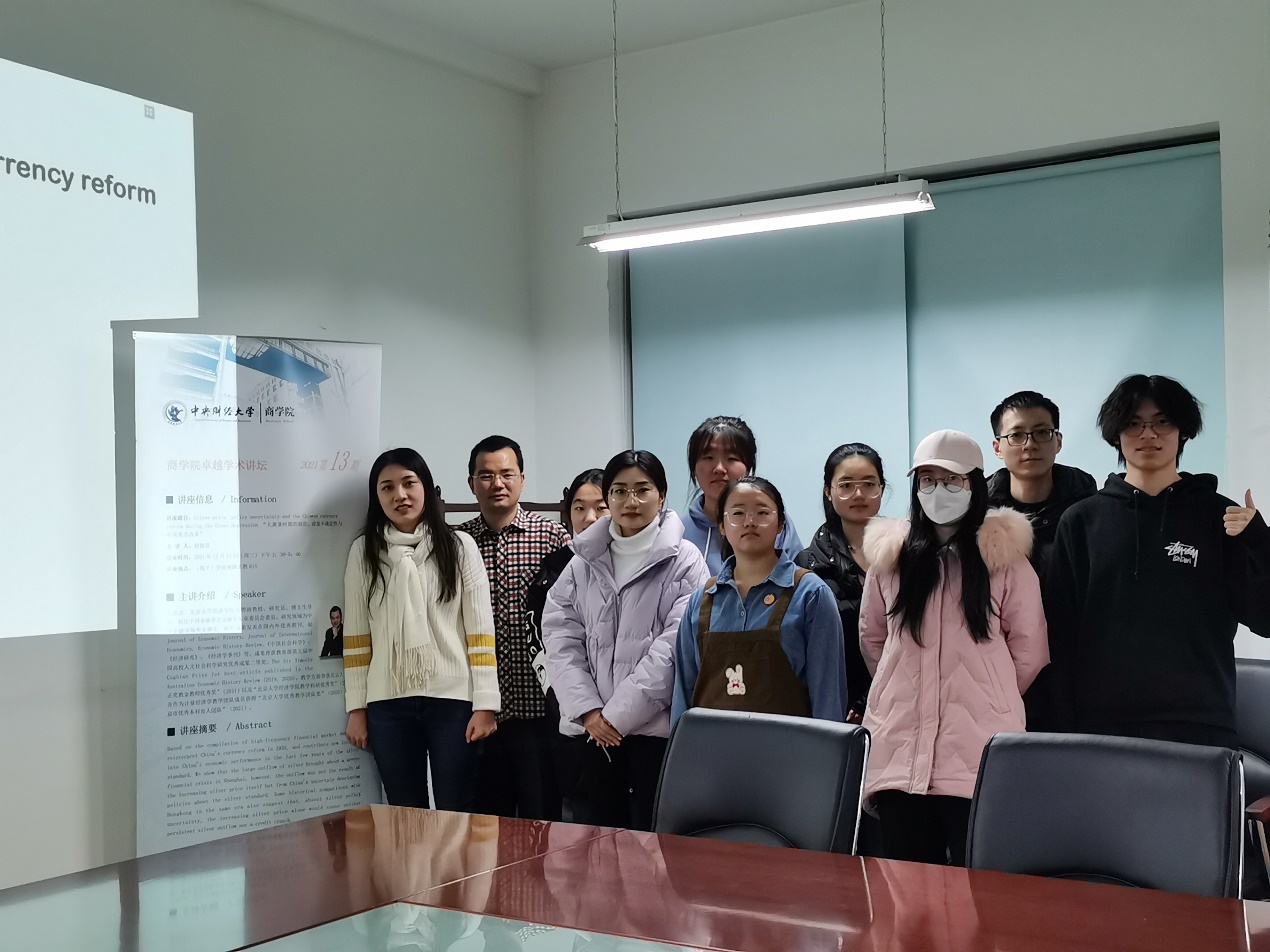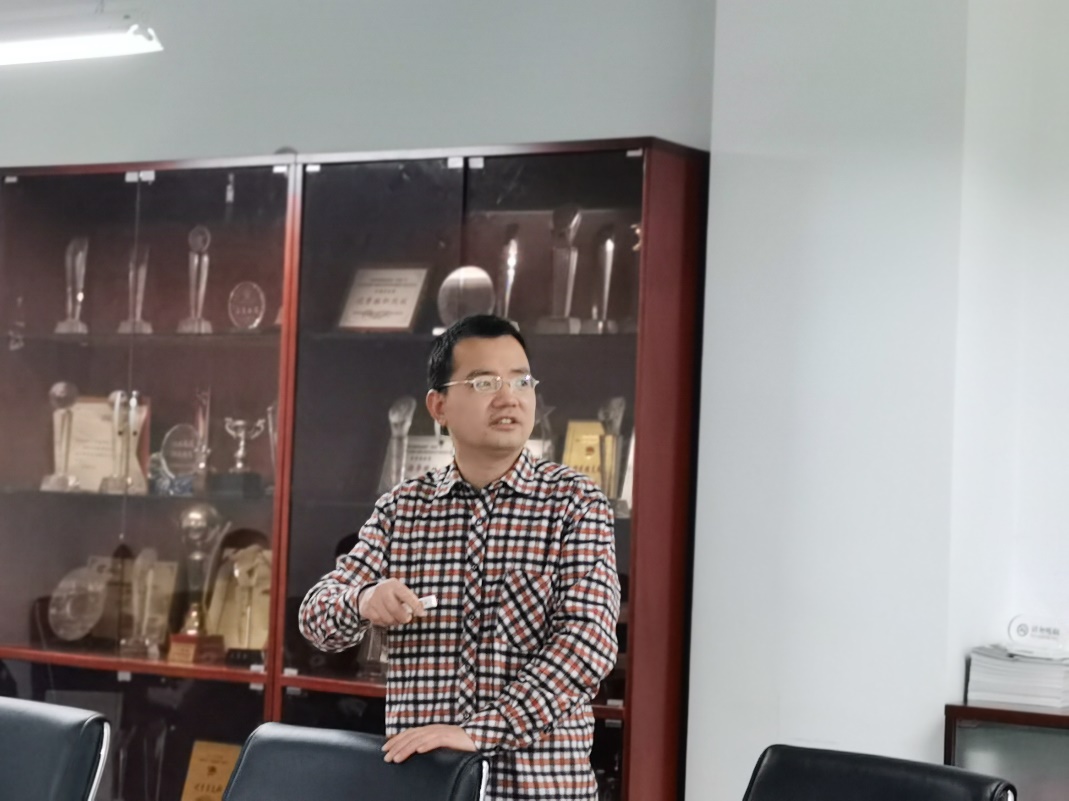15 December 2021, CUFE Business School held the 13th Session of the 2021 CUFE Business School Distinct Academic Forum.Dr. ZhaoLiuyan fromt he School of Economics, Peking University,was invited to give the speech. Faculty members, postgraduate and undergraduate students from CUFE Business School were attended.Dr. Gao Zhennanfrom Department of Financial Managementhosted the forum.

Dr. Zhao serves astenure Associate Professor and doctoral supervisor of the School of Economics, Peking University.Dr. Zhao also serves as member of the Financial History Professional Committee of the Chinese Society of Finance.Hismain research fields include China financial markets and financial history.Dr. Zhao’sresearchpapers were published on top journals such asJournal of Economic History, Journal of International Economics, Economic History Review, Chinese Social Sciences, Economic Research and Economics Quarterly.Dr. Zhao’sresearch findings were rewardedthe 2ndprize of the 5thChinese University Humanities and Social Sciences Research Excellent Achievements, the Ministry of Education, The Sir Timothy Coghlan Prize for best article published in the Australian Economic History Review (2019,2020).Dr. Zhao’steaching was rewarded the Peking University “Founder Award Teaching Gold Teacher Excellence Award” (2011) and the “Teaching and Research Excellence Award of Peking University School of Economics” (2018). As a member of the econometrics teaching team, they had won the “Peking University Excellent Teaching Team Award” (2020) and the “Beijing Excellent Undergraduate Education Team” (2021).

The topic of Dr. Zhao’s speech was“Policy uncertainty and financial markets: the Chinese silver crisis during the Great Depression”. Based on the high-frequency financial market data, the research reinterpreted the background and reasons of China’s legal currency reform in 1935, providing a new understanding of the economic performance in the final stage of China’s silver standard. This paper found that the large outflow of silver caused a serious financial crisis to Shanghai, however, the silver outflow was not mainly caused by rising international silver prices, but by the uncertainty of whether the Chinese government adhered to the silver-standard policy. Comparisons with Hong Kong’s history during the same period also showed that, without silver-standard policy uncertainty, rising silver prices alone would not lead to a continued silver outflow and a credit crisis.

In the communication session, Dr. Zhao answered questions and discussed issues with faculty and students. The interaction had greatly promoted academic exchange.
